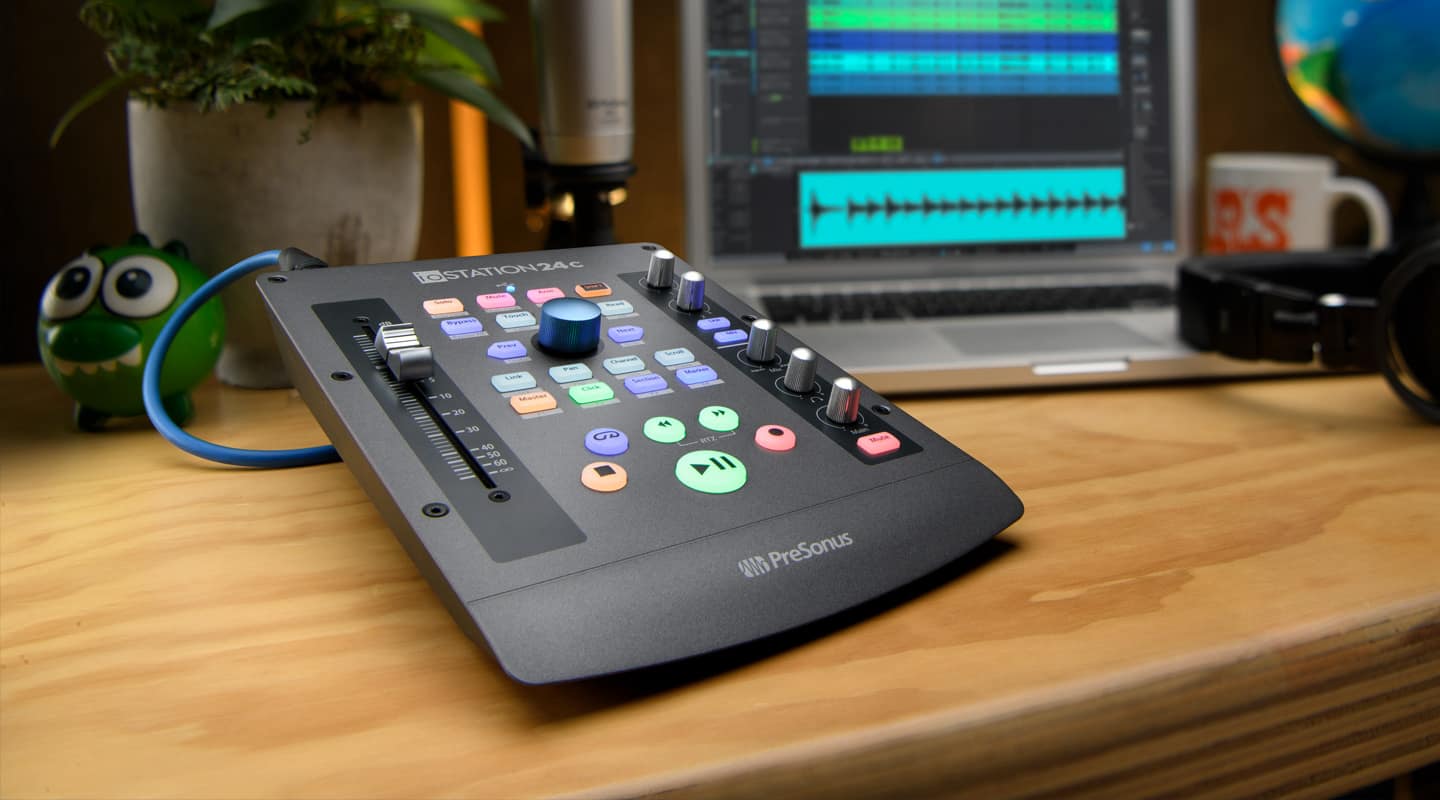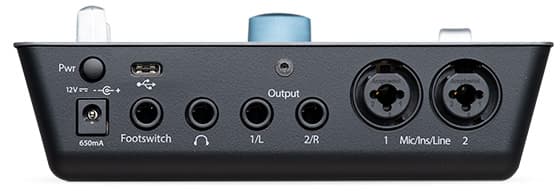
Review: Presonus ioStation24c Interface & Controller
Strange lovechild of the Faderport and Studio 24c or the perfect solution for artists wanting to record? The latest from Presonus could be both.
A recording artist needs two things: inputs and DAW control. Vocals, guitars, keys all dropped effortlessly into a timeline with a sprinkle of compression, effects and level balancing… music is happening. Your average 2-in/2-out interface can smash through this with relative ease — in no small part thanks to the software bundles that routinely ship with the interfaces. But it does leave the producer to mediate the vast bulk of the recording and mixing activity through a computer monitor and a mouse or trackpad. Enter the Presonus ioStation24c. Think of it as a Faderport with an audio interface. If you have no idea what a Faderport is, relax. All will be revealed.
FADER
Each constituent part of the ioStation isn’t groundbreaking in and of itself, but when combined offer something unique.
On the control side, you get a single-channel Faderport controller — the veteran control surface (first released in 2006) that offers a single 100mm motorised fader, a rotary dial, transport and DAW controls. Like any fader unit, people will have their opinions. This fader is touch-sensitive, offers a pleasing level of resistance but may not be as silky smooth as some more expensive units. All the buttons have a rubbery, utilitarian feel. The rubber feet are welcome — the ioStation always feels like its feet are firmly planted even during frenetic automation sessions. The transport controls are ergonomically-arranged, and the other controls are grouped by application. The Shift key opens up a second-tier world of macros and other commands, including Undo and Redo controls (my vote would be to give these primary control status!).
FACE IT
I/O wise, it’s a familiar 2-in, 2-out landscape — no surprises. A stereo pair of combo sockets adorn the rear, with line level select, 48V and, in my experience, enough gain to record guitar when ‘Line’ is selected. A crossfade between DAW and inputs is present, and a welcome Mute button for muting main outs when using headphones — a nice touch.
I’ve always found Presonus’s interfaces to be solid, and the ioStation is no exception. The XMAX Class-A preamps are famously clean and flexible, and the unit is well constructed. ioStation sports the same confidence-inspiring control knobs as the rest of the line, only this time easier to access, sticking up vertically from the desktop form-factor rather than horizontally from a rackmount chassis. A well spec’ed phones jack — driving my 250Ω Beyer’s no problem — round out the I/O.
NEED TO KNOW

It was dead easy to ride my acoustic track throughout the song to balance it against the vocal … The experience left me hungry to mix some more
ON THE RECORD
Firing up Presonus’ own Studio One DAW, I plugged in a guitar and a mic, to lay down a track. It was a remarkably intuitive process. Studio One steadily wins more friends and part of its appeal is its deep integration with companion Presonus hardware.
There’s something quite refreshing about the layout of the controls. The desktop format means that key controls, such as Gain, are easily to hand… much more like an actual mixing console — a godsend when you’re huddled behind a boom stand. Switching between mix channels is a breeze. I only wish there was a button to toggle between the Mix and Session/Timeline windows in the DAW.
If ioStation is your introduction to recording, then you’re in safe hands. Studio One is a pro piece of software and is especially suited to singer/songwriter producers. Features, such as the pre-built FX chain presets (for example, ‘Basic Acoustic’) are a welcome ‘cheat code’ for beginners and more experienced producers alike. You are immediately in the ‘ballpark’, with a polished sound. With a little tweaking, a respectable Soundcloud-worthy mix is achievable, with the onboard software doing most of the legwork, leaving just the muso’s capable ears to decide on what to tweak, and which presets sound best.
ioStation will happily converse with other DAWs via the venerable HUI protocol but if you’re still open-minded about which DAW horse to back then I’d encourage you take StudioOne for a spin.
AUTOMATION STATION
Gen-Z has been born into a world of automation but riding actual faders remains a foreign concept.
Riding virtual faders is not the same. In fact, a mouse or a touchscreen discourage such activity and the resulting ‘set/forget’ mixes are the worse for it.
As an introduction to hands-on mixing with automation, Studio One in combination with the ioStation is a marriage made in heaven. It was dead easy to ride my acoustic track throughout the song to balance it against the vocal, and then to add in some ‘Touch’ button edits where the level needed a bump. The experience left me hungry to mix some more.
Those requiring more ins and outs will look elsewhere, and those producing electronic music will probably have already bailed out of this review. But if you’re a solo artist looking to do some recording and to up your mix game, ioStation24c (and the included Studio One) will be a cost-effective and potent weapon in your studio.
























RESPONSES